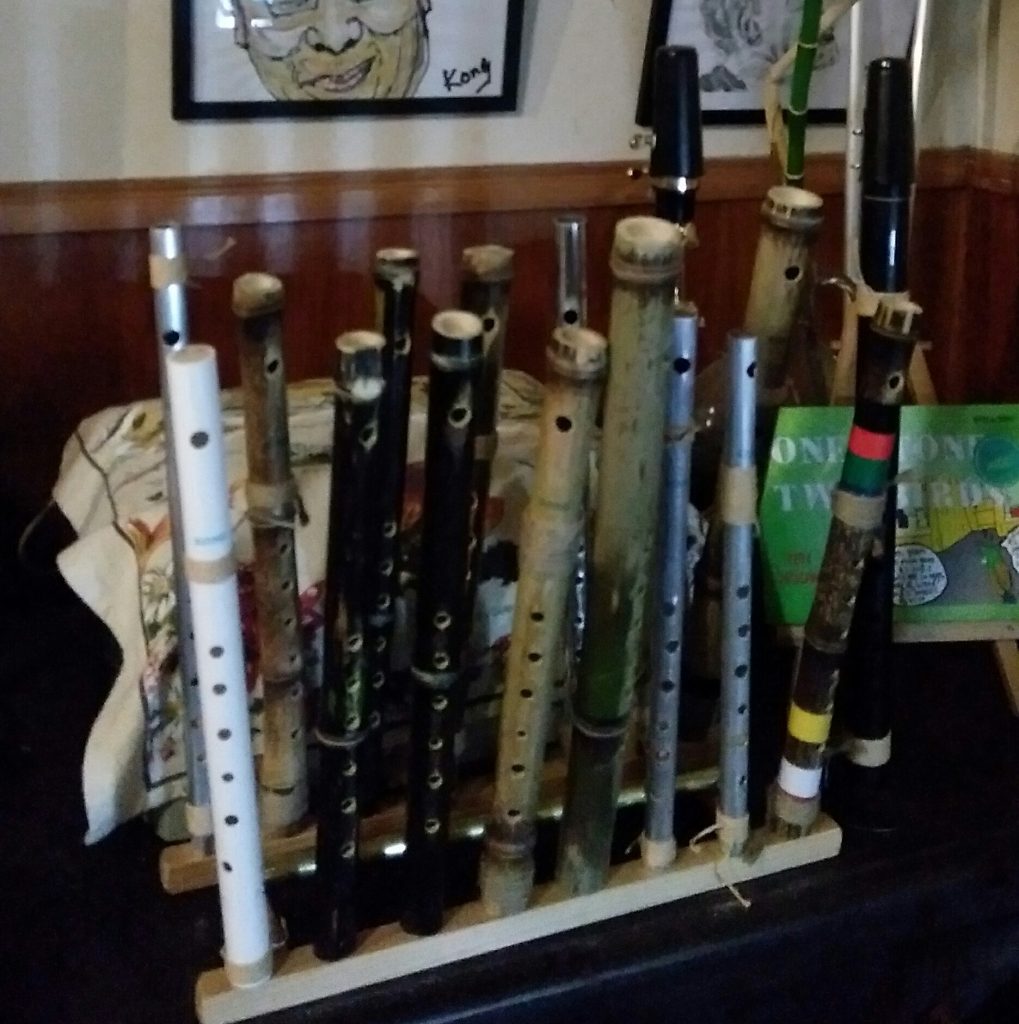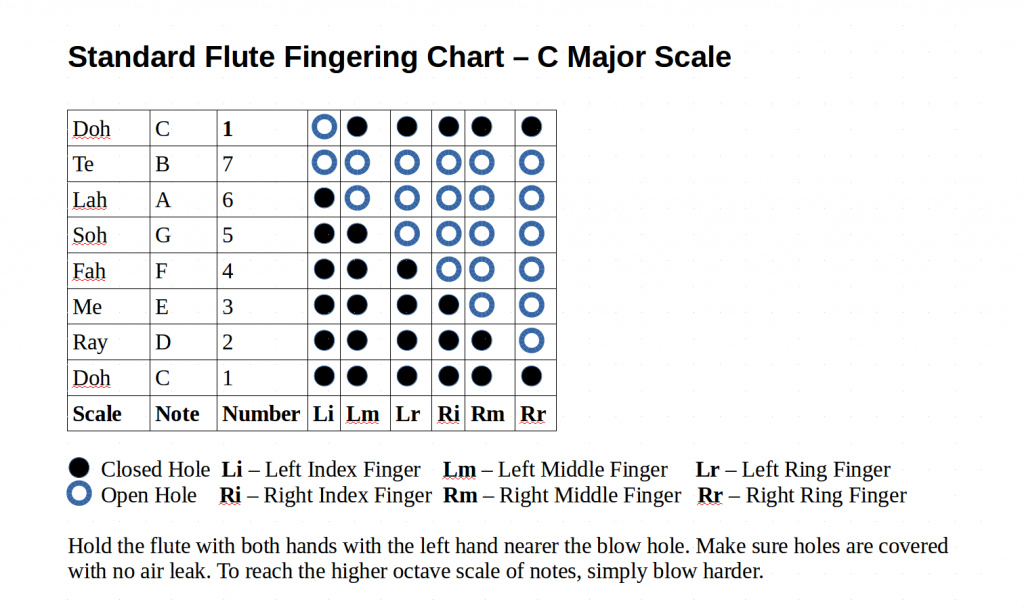Flute is an ancient musical instrument. The oldest flute found in Germany was said to be over 40,000 years old.
There are many types of flute being played in many cultures from the bamboo flute to concert flute. In this tutorial you will learn how to play the simplest 6-hole fingering system for flute, whistle, piccolo, fife, bansuri or dizi.
Flute
The Irish flute is typically made of wood. It can be diatonically tuned or multi-key.
Whistle
A tin whistle, also known as Irish whistle or penny whistle. They are typically made of brass, nickle or tin. It is a diatonic instrument with keys from b flat, c, d, e, f and g.
Fife
A fife is a small high-pitched flute, similar to a piccolo. It originated in medieval Europe and used in military and marching bands. It is diatonically tuned.
Piccolo
A piccolo is a smaller flute normally in a higher octave.

Fingering chart
The 6-hole is the simplest fingering system and the easiest to learn and master. They typically play in two octaves. Note that 1 for the second Doh shown below in bold print. We use the bold print to indicate a higher octave note throughout this tutorial, which also means that you will need to blow slightly harder to achieve the higher octave note. For half-holing notes, we use superscript which is a smaller size number, e.g 6 on the 6 hole for C. In this way, you will be able to play full chromatic keys with this fingering system.

Half-holing method
We use the half-holing method to play some semi tones. Half-holing is the way we half cover a hole to create another note on the diatonic flute, e.g. the C note can be created by half holing the number 6 hole. The same way we create the F note by half holing the number 2 hole.
How to hold the flute/whistle/piccolo/fife
Hold it with both hands, with the left hand nearest the mouthpiece/fipple (blow hole of whistle) or embouchure (blow hole of flute). Rest the instrument on your thumbs to support it, and use the finger pads to cover the six holes. Make sure the holes are completely covered with no leak.
Making sound
Place the flute so that the hole (embouchure) is perpendicular to your bottom lip. Blow downward rather than straight out in front of you, like blowing into an empty glass bottle to make a ringing sound.
Ready to go?
Practise on the fingering chart shown above. Make sure you get the clean notes going up and down the scale, in two octaves. The key is to practise regularly. Now try your first song below.
Twinkle twinkle little star
1155665, 4433221,
5544332, 5544332,
1155665, 4433221.
